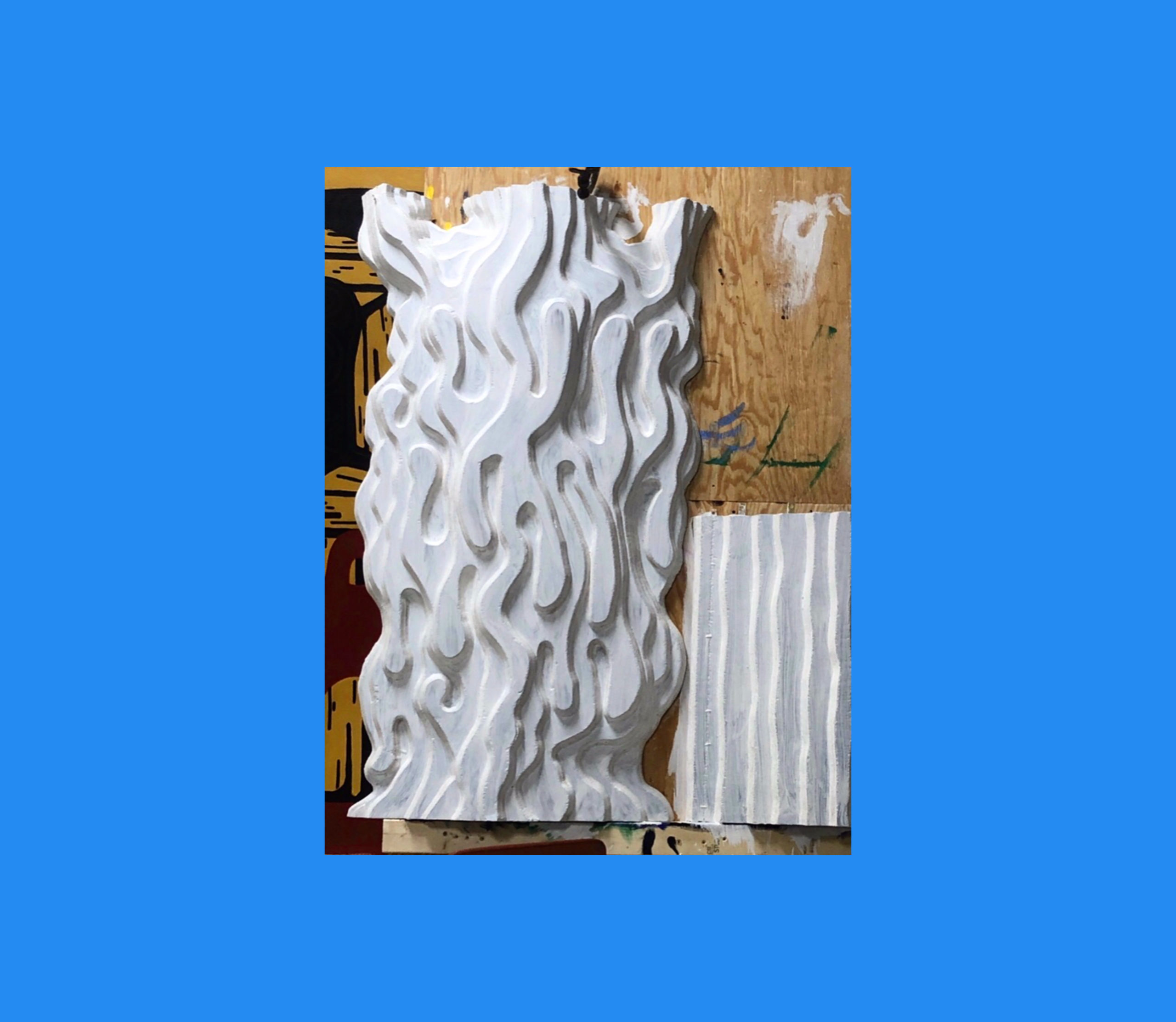Steve Foust has lived in Michigan, Tanzania and New York City. He received an MFA from Wayne State University. He started showing at the Willis Gallery in 1970 and later at the Feigenson Gallery. Recently he has shown at the Simone Desousa Gallery in Detroit. He received a National Endowment for The Arts sculpture fellowship in 1976. He has exhibited in Detroit and New York City numerous times since then in galleries and in public sculpture. He has been on arts panels for the New York City and State Foundations for the Arts. And has been commissioned by the New York City Department of Cultural Affairs.
How did you come to work with your specific collaborator? Did you know them before this? Were you familiar with their work?
Jim Chatelain and I have been friends since the early 70s. We had studios across the hall from each other in the Old Convention Hall on Cass Avenue. We have been very good friends for all these years. Whoever made the collaboration choices made a good pairing. I am not only familiar with Jim’s work but I own some and he owns some of mine.
Before the actual process of making, what was the process of deciding on what to make like? What was the making process itself like?
The process of how we would work was pretty simple and direct. Jim is the painter, I am the sculptor, so we would exchange his paintings on plywood and my wooden sculptures. He would paint my sculptures and I would cut up and rearrange his paintings into sculptures. We made four different painted sculptures. We finally chose a relief sculpture that I made and that he painted for the show.

What new possibilities were offered through collaboration that would not have been possible working alone? Did you feel any disadvantages compared to working alone?
My focus is on the sculptural form even if unembellished. I usually add pigment or pigment and shellac to the raw wood. Jim, on the other hand, is a very expressive painter. His work is imaginative, multi-chromatic and detailed. He said that it was interesting and new to paint a three-dimensional object. And I have found it gratifying to know that it’s possible to embellish my sculptures.
Did working collaboratively provide you with any insights that could be extrapolated and used outside of art in either a personal or political context? Were there lessons learned that could be used in other aspects of life? What did it teach you about democracy?
The interaction, though long distance, gave us a new way to communicate and relate. The styles of my formalism and his expressiveness made me aware of my orientation and possibilities for change. We really did not have difficulties in joining our styles though we had many exchanges in doing so. Also we will continue collaborating in the same way in the future because it was so rewarding.
As far as democracy relates to this process that we underwent, we had some disagreements which led to understanding compromises. One cannot get everything that one wants in a collaboration format. For a simplified example; the title “Dog Star Flame Walker“ was worked on a great deal. Jim’s first suggestion related to the dominant dark dog like shape. I saw the many little star like points of light on that shape. I suggested the Dog Star which is the brightest star in the sky and related to some African culture (Dogon ironically). In his painting there were fire like passages and he suggested that “Fire Walker” was an action word. I suggested “Flame Walker” would be better.
Working collaboratively informed me that bouncing ideas off of each other produced a different result than our usual ways of working independently. I would describe it as a kind of synergy. Group think does not have to necessarily produce watered down ideas. It can expand the idea as well. I have a new respect after going through this collaborative process for this type of activity in most any field. Close relationships such as marriages have this type of synergy. So this was reinforced by participating in this show.
I do not think the concept of democracy was relevant in the situation. More or less equal partners came together to compromise on this piece of art. There was no majority/minority position. If we had not known each other so well the power of each participant might have come into play.

Going off of the title of the exhibition, how do you and your collaborator see your specific work differently?
Jim and I see things differently especially because of our specific orientations. In photographs of three- dimensional objects everything is frontal. In this case I wish that there were more ways than just physically viewing the object in the space that could convey the three dimensional depth of my relief sculpture. Photo- graphs portray this piece as a painting. And the painting in the collaboration actually seems to reduce the three-dimensionality by focusing on the painted surface.
